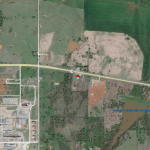Efficient Seepage Pit Septic System: The Ultimate Solution For Effective Waste Management
Seepage Pit Septic System: A Sustainable Solution for Wastewater Treatment
Introduction
Dear Pit Walk Enthusiast,
3 Picture Gallery: Efficient Seepage Pit Septic System: The Ultimate Solution For Effective Waste Management



Welcome to our comprehensive guide on the seepage pit septic system. In this article, we will explore the ins and outs of this sustainable solution for wastewater treatment. Whether you are a homeowner, a contractor, or simply someone interested in eco-friendly alternatives, this article will provide you with valuable insights into the seepage pit septic system and its benefits.

Image Source: amazonaws.com
Nowadays, more and more individuals are recognizing the importance of sustainable practices, and wastewater treatment is no exception. The seepage pit septic system offers an efficient and environmentally friendly way to manage wastewater disposal. By understanding its mechanics, advantages, and disadvantages, you will be equipped with the knowledge to make informed decisions regarding wastewater treatment on your property.
Let’s dive into the world of the seepage pit septic system and discover how it can revolutionize wastewater management.
What is a Seepage Pit Septic System? 🚽
A seepage pit septic system, also known as a seepage pit cesspool, is a type of on-site sewage disposal system that treats and disposes of domestic wastewater. It consists of a large excavation in the ground, lined with concrete or precast concrete rings, designed to allow the effluent to seep into the surrounding soil for further treatment.

Image Source: cloudinary.com
The seepage pit septic system is commonly used in areas with suitable soil conditions and sufficient space. It offers an alternative to traditional septic systems, providing a cost-effective and environmentally friendly solution for wastewater treatment.
How does a Seepage Pit Septic System Work?
A seepage pit septic system operates by allowing the effluent to slowly infiltrate the surrounding soil. As wastewater flows from the house into the septic tank, solid waste settles at the bottom while scum floats to the top. The liquid effluent, which is relatively clear, exits the septic tank and enters the seepage pit through a distribution box or a network of pipes.

Image Source: uniquedrainseptic.com
Once inside the seepage pit, the effluent percolates into the soil, where it undergoes further treatment. The soil acts as a natural filter, removing impurities and pathogens from the wastewater. Over time, the treated effluent recharges the groundwater, contributing to the overall water cycle and reducing the strain on municipal treatment facilities.
Who Can Benefit from a Seepage Pit Septic System?
The seepage pit septic system can be beneficial for various individuals and scenarios. Here are some examples:
Residential homeowners: If you live in an area without access to a centralized sewer system, installing a seepage pit septic system can provide you with a sustainable wastewater treatment solution.
Commercial property owners: Businesses, recreational facilities, and other commercial establishments that generate significant amounts of wastewater can benefit from the cost-effectiveness and efficiency of a seepage pit septic system.
Remote locations: Properties located in remote areas, such as cabins, cottages, or agricultural lands, can utilize seepage pit septic systems as a self-contained wastewater treatment option.
When Should You Consider a Seepage Pit Septic System?
The decision to install a seepage pit septic system depends on various factors, such as soil conditions, local regulations, and property size. Consider the following situations where a seepage pit septic system might be the right choice:
Insufficient soil percolation: If the soil on your property has low permeability, traditional septic systems may not be suitable. A seepage pit septic system allows for more efficient wastewater treatment in such cases.
Large property size: If you have a spacious property, a seepage pit septic system can be an ideal solution as it requires more land area compared to traditional systems.
Environmentally conscious approach: If you prioritize sustainability and want to minimize your environmental impact, a seepage pit septic system provides a greener alternative to conventional wastewater treatment methods.
Where Can a Seepage Pit Septic System Be Installed?
The suitability of a seepage pit septic system depends on the characteristics of your property and local regulations. Here are some considerations for installation:
Soil conditions: The soil on your property should have sufficient permeability to allow for proper wastewater treatment. Conducting a percolation test can help determine if a seepage pit septic system is feasible.
Property size: Seepage pit septic systems require a larger land area compared to traditional systems. Ensure that your property has enough space to accommodate the excavation and the required setbacks from water wells, property boundaries, and buildings.
Local regulations: Before installing a seepage pit septic system, check with your local health department or environmental agency to ensure compliance with regulations and obtain the necessary permits.
Why Choose a Seepage Pit Septic System?
There are several advantages to opting for a seepage pit septic system:
Cost-effectiveness: Seepage pit septic systems tend to be more affordable compared to conventional septic systems, making them an attractive option for homeowners and businesses.
Longevity: Properly designed and maintained seepage pit septic systems can last for several decades, providing a reliable long-term solution for wastewater treatment.
Reduced environmental impact: The seepage pit septic system promotes natural treatment of wastewater, allowing it to filter through the soil and recharge the groundwater. This helps protect water resources and reduces the strain on centralized treatment facilities.
What Are the Disadvantages of a Seepage Pit Septic System?
While seepage pit septic systems offer numerous benefits, it’s essential to be aware of their limitations:
Site limitations: Seepage pit septic systems are not suitable for all locations. Factors such as soil conditions, property size, and local regulations can restrict their installation.
Regular maintenance required: Like any wastewater treatment system, seepage pit septic systems need regular maintenance to ensure their optimal performance. This includes periodic inspection, pump-outs, and monitoring of the effluent quality.
Potential for groundwater contamination: If not properly designed or maintained, seepage pit septic systems can pose a risk of contaminating the groundwater. Regular inspections and adherence to local regulations are crucial to prevent such issues.
Frequently Asked Questions about Seepage Pit Septic Systems
1. Can a seepage pit septic system handle large volumes of wastewater?
Yes, seepage pit septic systems can handle large volumes of wastewater. However, it is essential to properly size the system to accommodate the anticipated wastewater flow and ensure optimal performance.
2. How often should a seepage pit be pumped?
The frequency of seepage pit pumping depends on various factors, including the size of the pit, the number of occupants, and the wastewater flow. It is recommended to have a professional inspect and pump the pit every 3-5 years.
3. Are seepage pit septic systems legal?
Seepage pit septic systems are legal in many areas, but regulations may vary. It is crucial to check with the local health department or environmental agency to ensure compliance with regulations and obtain the necessary permits.
4. Can a seepage pit septic system be installed in rocky soil?
Seepage pit septic systems require soil with sufficient permeability to allow for proper wastewater treatment. If the soil is rocky and does not meet the requirements, other alternatives, such as mound systems or advanced treatment units, may be more suitable.
5. How can I maintain a seepage pit septic system?
Maintenance of a seepage pit septic system involves regular inspections, pump-outs, and monitoring of the effluent quality. It is recommended to have a professional conduct inspections and pump-outs every 3-5 years. Additionally, avoid disposing of non-biodegradable or harmful substances down the drains to prevent system clogging and damage.
Conclusion: Embrace Sustainable Wastewater Treatment
In conclusion, the seepage pit septic system offers a sustainable and cost-effective solution for managing wastewater. By allowing the effluent to gradually infiltrate the soil, this system promotes natural treatment and reduces the strain on centralized facilities.
Before considering a seepage pit septic system, ensure that your property meets the necessary requirements and comply with local regulations. Regular maintenance and monitoring are essential to ensure the system’s optimal performance and prevent groundwater contamination.
Embrace sustainable wastewater treatment with the seepage pit septic system and contribute to a cleaner and healthier environment for future generations.
Final Remarks
Disclaimer: The information provided in this article is for general informational purposes only and should not be considered as professional advice. Consult with a qualified septic system professional or local authorities for specific guidance on seepage pit septic systems and their suitability for your property.
This post topic: Pit



